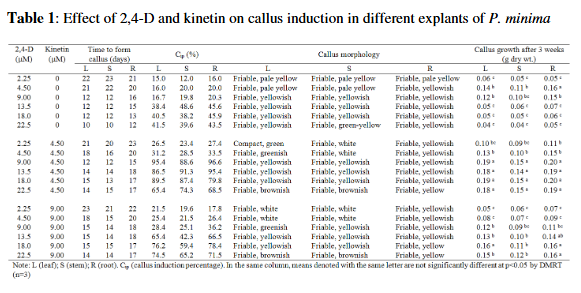Production of Anti-Cancer Compound, Physalin B from Callus Cultures of Physalis Minima (Linn.)
Keywords:
Basal medium, Carbon source, Callus cultures, Explants, Plant Growth Regulators, Secondary metabolites, Physalin BAbstract
This study was conducted to establish callus cultures from leaf, stem and root explants of Physalis minima using different combinations of 2,4-D and kinetin. Callus growth and anti-cancer compound, physalin B production were further enhanced by optimising the cell explants and media compositions such as basal media, salts concentration, carbon sources and plant growth regulators. The results indicated that callus cultures derived from leaf, stem and root explants were best initiated using a combination of 9.0 µM 2,4-D and 4.5 µM kinetin. Callus growth and synthesis of physalin B were peaked at the late exponential growth phase over 25 d of culture. Callus growth did not vary between explants, but physalin B was observed higher in leaf (0.78 mg g-1 dry wt.), followed by root (0.71 mg g-1 dry wt.) and stem (0.64 mg g-1 dry wt.). MS basal medium was found superior to B5, SH and WH basal media in supporting growth and physalin B production. Further tests on the media compositions obtained a half strength of MS salts (½MS), 2.5% (w/v) sucrose and 9.0:4.5 µM of 2,4-
D:kinetin combination, which were the preferred salts strength, carbon sources and plant growth regulators for optimum growth (0.23 g dry wt.) and physalin B production (1.75 mg g-1 dry wt.) of callus cultures derived from leaf.
Downloads



















